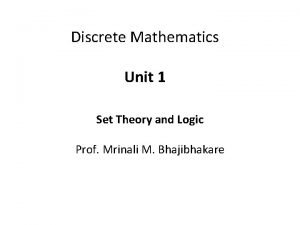Custom Rate Laws Set Kinetic Rate Laws from







- Slides: 7

Custom Rate Laws

Set Kinetic Rate Laws from the Reactants pane. Set the mineral’s initial mass and specific surface area Set either a rate constant, or a pre-exponential factor and an activation energy Use the built-in rate law, or click + to select other options. You can set options for the nucleation, nonlinearity, and cross-affinity Hydrogen ions promote the reaction with a “power” of one First, “add” a “Kinetic mineral”

React, Phase 2, X 1 t, and X 2 t contain a symbolic interpreter that can evaluate any rate law Simply type out the form of the rate law The equation mimics the rate law set in the previous slide using the built-in rate law

You can type the BASIC script into an editor… Click Edit… The mineral’s dissolution rate is calculated from its rate constant, surface area, and saturation. If saturated, however, its precipitation rate is zero.

… or save the BASIC script as a. bas file. Click Browse… The same rate law written in the BASIC language and saved as an external. bas file.

Write and compile a C++ function for maximum flexibility Library and function

Your custom rate laws can utilize internal parameters, “helper functions”, and syntax listed in the Reaction Modeling Guide (RMG) and the Reactive Transport Modeling Guide (RTMG). Method for setting Custom Rate Law Internal parameters (RMG Table 5. 1) Helper functions (RMG Table 5. 2) BASIC language syntax (RMG Table 5. 3) Internal parameters (RTMG Table A. 1) Equation Script File Compiled function For details, see “Custom Rate Laws” in the GWB Reaction Modeling Guide.













